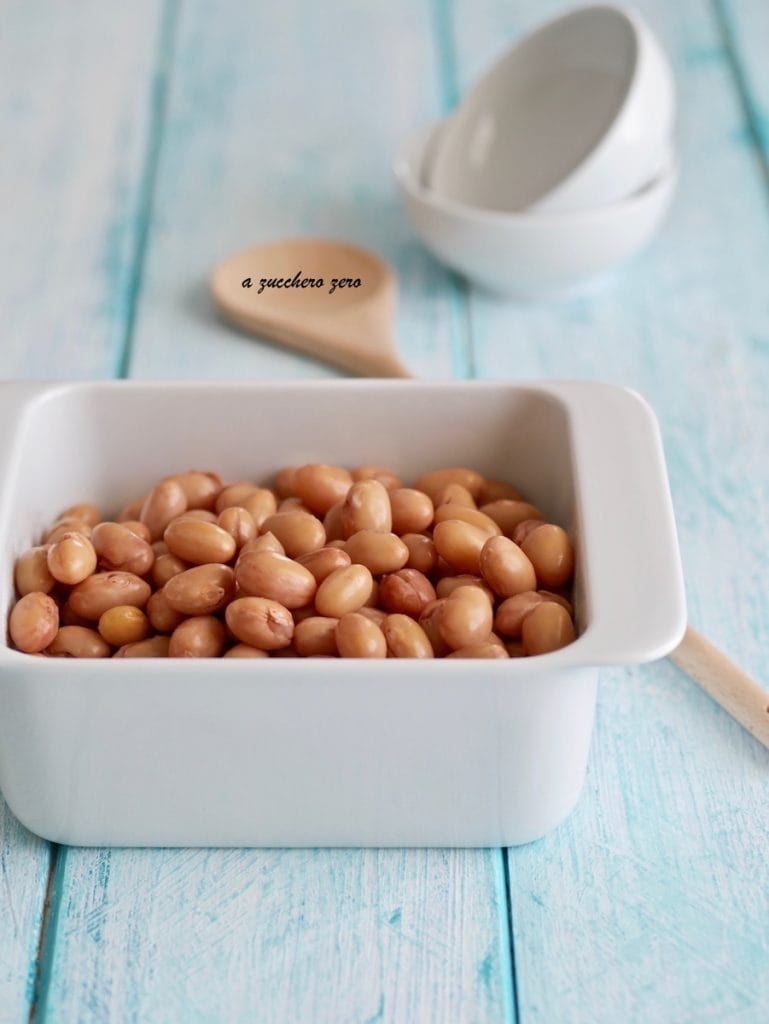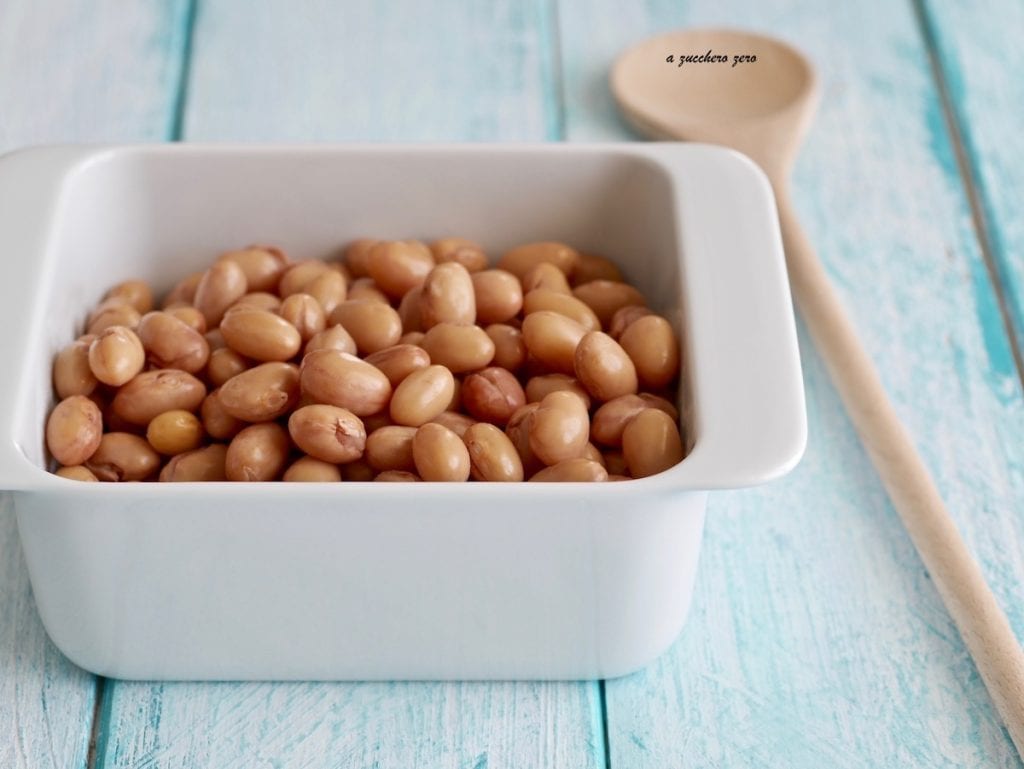Cooking fresh beans: here’s how to do it simply using the pressure cooker.
My basic recipe for cooking beans perfect as soup or as a base for appetizers, main or side dishes.
Additionally, beans can be used in the preparation of creams and chocolate desserts instead of flour.
Being naturally fresh legumes, they do not require soaking.
When are fresh beans harvested?
Fresh beans are generally harvested from July to September.
Early varieties can be ready as early as June-July, while late ones mature around September-October.
Choosing the Beans
I bought borlotti beans locally to cook and use for preparing summer recipes and to store in the freezer as a supply for the cold season.
You can follow the same procedure with other varieties of fresh beans such as cannellini beans, black-eyed peas, butter beans, black beans, keeping in mind that cooking times vary slightly.
Pressure Cooker Cooking.
Cooking beans in a pressure cooker reduces cooking times and makes them softer and more digestible.

- Difficulty: Easy
- Cost: Inexpensive
- Preparation time: 20 Minutes
- Portions: 2 People
- Cooking methods: Pressure Cooker
- Cuisine: Italian
Ingredients
- fresh borlotti beans (2 servings weight according to dietary guidelines)
- water (equal to twice the volume of the beans)
- to taste salt (at the end of cooking)
- 1 drizzle extra virgin olive oil (raw)
Suggested Tools
- Pressure Cookers
Preparation
Recommended portions according to healthy eating guidelines
– fresh, soaked or canned legumes: 150 g;
– dried legumes: 50 g.
The weights are always personal.
I usually prepare more portions to have a convenient supply to freeze.
Shell the beans, remove the legumes from the pod, and rinse them thoroughly.
Being naturally fresh legumes, they do not require soaking.
Note
– always consult your pressure cooker’s manual;
– check that the valves and seals are clean;
– do not exceed the maximum limit indicated inside the cooker.Pressure Cooker Cooking
In the pressure cooker, add:
– fresh beans;
– water equal to twice the volume of the beans.Close the cooker.
Always remember to check that the seal is correctly positioned and the valve is clear.Bring to a boil over medium-high heat until the pot comes under pressure and the valve emits the classic whistle.
Once under pressure, reduce the heat and cook for about 15 minutes.
Turn off the heat, let the steam release completely, then open the lid cautiously, keeping it away from your face.Add the salt: now, not at the beginning of cooking, to avoid the outer shell of the legumes hardening, which would make cooking longer.
For those with electric pressure cookers like Instant Pot, the steps are similar, but the commands vary: e.g., “Pressure Cook” for 15 minutes + natural steam release.
Your digestible and light beans are ready.
In the basic recipe, perfect as soup or as a base for appetizers, first or second courses.
Plate and finish with a drizzle of raw olive oil to enjoy them at their best.
Enjoy your meal!
Pass the cooked beans through a food mill: it ensures separation from the skins without the formation of air bubbles.
You can follow the same procedure with other varieties of fresh beans such as cannellini beans, black-eyed peas, butter beans, black beans.
Cooking times vary slightly depending on the type chosen.
Storage, Tips, and Variations
As this is a basic recipe, I cook the beans simply.
Store the cooked beans in airtight containers:
– in the fridge for up to 2-3 days;
– in the freezer for up to 3 months.
It is advisable to drain the legumes before freezing them: it may involve a minimal loss of nutrients, but in the context of freezer storage, it is a useful choice:
– better preservation without ice crystals;
– faster thawing;
– versatility: drained legumes are more practical to use in different recipes.
The amount of nutrients lost is minimal: much of the nutrients remain in the legume itself, and many of these substances would degrade anyway during freezing and subsequent reheating.
Let the legumes cool completely, drain them, and portion them.
If you want to recover everything, you can use the liquid immediately or freeze it separately.
When you defrost them, you can reintegrate the liquid by adding water or broth.
If you plan to use them in brothy dishes like soups or purees, you can freeze them with a bit of their cooking liquid, ensuring the container is suitable and leaving space for expansion.
FAQ (Frequently Asked Questions)
Tips on How to Pair Legumes
Recommended pairings:
– legumes + grains [example: bread, pasta, or rice], preferably choose whole grains;
– legumes + proteins.
Respect the proportions and combinations indicated in your dietary guidelines.
To learn more about the topic, read the article by clicking the following link: Pairing legumes in the diet.How many grams of beans per person?
Recommended portions according to healthy eating guidelines
– fresh, soaked or canned legumes: 150 g;
– dried legumes: 50 g.
Quantities should always be adapted to one’s nutritional needs.How to make beans more digestible?
How to reduce the fibers of beans?Pass the cooked beans through a food mill: it ensures separation from the skins without forming air bubbles.
When are fresh beans harvested?
Fresh beans are generally harvested from July to September.
Early varieties can be ready as early as June-July, while late ones mature around September-October.

